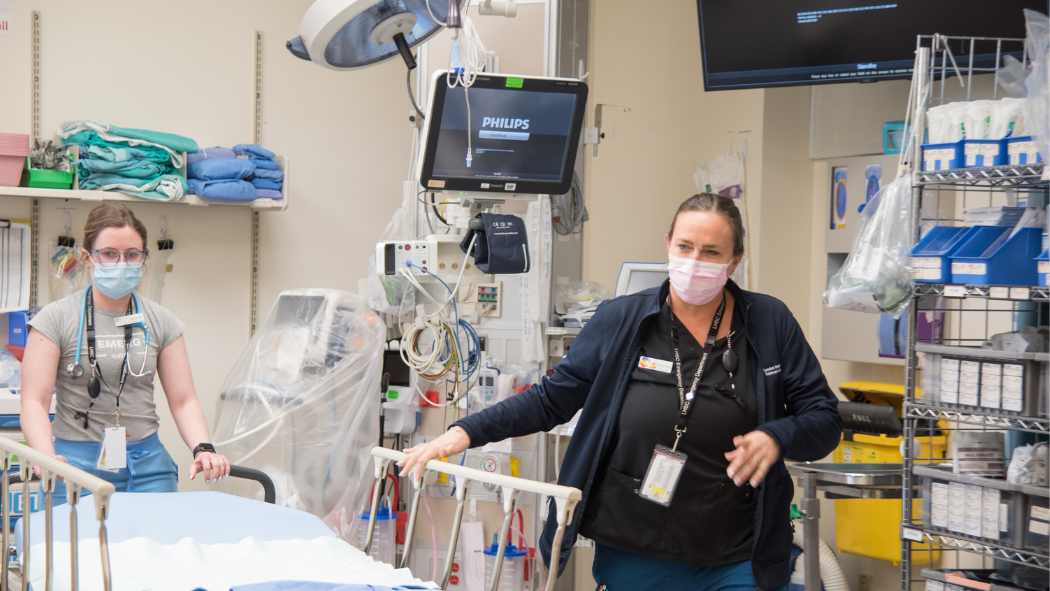
March 5, 2024
Changes to how we move patients within our hospital are in turn freeing up paramedic partners to be available to respond to new 911 calls in the community
Due to the commitment and dedication of our adult Emergency Department (ED) and adult inpatient staff and physicians, over several months, London Health Sciences Centre (LHSC) has reduced the time paramedics have to wait to transfer the care of a patient to Emergency Department staff by almost 70 per cent.
With the support of Ontario’s Ministry of Health, what was previously a two-hour wait for paramedics is now taking less than 40 minutes, which in-turn frees up paramedic partners to return to service in our community and respond to new 911 calls for health emergencies.
“Like many hospitals in the province, we have been seeing an increase in patients with more complex health conditions coming to our EDs for quite some time, and we are continually finding new ways to make the best use of our space and staff to safely move patients through our EDs and across our hospitals,” says Dr. Christie MacDonald, Physician Department Head, Emergency Medicine at LHSC. “In an effort to improve that ambulance offload time, in November we used two key strategies that have also proven successful at other Ontario hospitals in terms of AOT. The team created fast and drastic change and we saw immediate improvement here.”
Today, regardless of how patients arrive to our Emergency Department, all patients are triaged and then transitioned to one of three care spaces:
- immediately into a care space for physician assessment and treatment,
- to a stretcher,
- or to a chair.
Dr. MacDonald says, “A visit to the EDs is going to look a little bit different for patients and families than it did previously, where depending on your condition you could potentially be moved from a paramedic stretcher to a chair in our waiting room, but these are important and safe changes that allow us to speed the availability of care to all patients arriving to our EDs.”
Part of improving ambulance offload times has also changed how we admit patients from the Emergency Department into the hospital when necessary. Our staff throughout the hospital are now flagging when beds become available on patient floors more quickly, allowing a patient waiting in the ED to be admitted sooner.
Once an available bed has been assigned to a patient waiting within the ED, units expedite the movement of the patient within 45-minutes. Speeding-up the time to inpatient units following a bed assignment allows us to in-turn free-up a space within the ED for the next patient and helps to better ensure that all members of the community receive the care they need when they need it.
“Our frontline teams are truly remarkable. We are still seeing high volumes of patients in our EDs, but by redesigning care and taking a hospital-wide approach to a solution for something that could easily be viewed as an ED-specific challenge, we are achieving success that wouldn’t be possible otherwise.” adds Dr. MacDonald. “Our team is pleased by what has been accomplished so far and we are focused on ensuring sustainability. We are excited to now consider other processes that streamline ED care for our patients and our families.”
Middlesex-London Paramedic Service Deputy Chief Adam Bennett shares, “We are encouraged by LHSC's efforts to help improve ambulance offload times.”
It is important to note for our community members that while these improvements do speed up ambulance offload times, patients arriving to our EDs may continue to experience wait times as we see the most critically ill and injured patients first. Our estimated ED wait times for non-urgent and non-emergent concerns are always available on our public website.
For media inquiries, please email media@lhsc.on.ca.